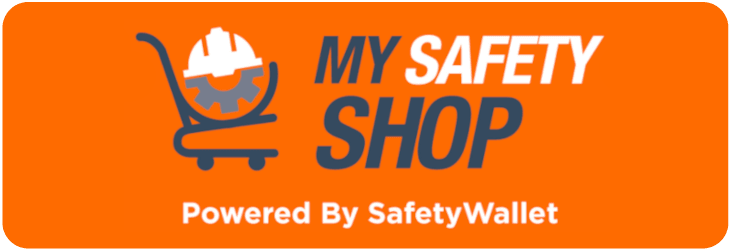Health and Safety 5 Steps to a Risk Assessment
Overview
A risk assessment is a systematic method that involves the evaluation and observation of work activities while considering what could go wrong, deciding on suitable control measures, and implementing them.
These risk control measures are designed to either eliminate the risk, or to reduce or minimise it as far as it is reasonably practicable. It is a legal requirement for employers to ensure that they provide a healthy and safe working environment for employees and visitors to the premises, and by doing a risk assessment and ensuring effective control measures, employers are complying to the law. Hazard Identification and Risk Assessment or HIRA, is a legal imposition placed on employers in keeping with the Occupational Health and Safety Act 85 of 1993.
The health and safety 5 steps to a risk assessment which are provided below can serve as a guide for employers who have never done a risk assessment, or those who wish to brush up on the procedure to do so.
Step 1 – Identify the hazards or anything that could cause harm
Employers have a legal obligation towards assessing the OHS hazards and risks that employees face in the workplace. The employer must systematically check for possible physical, mental, chemical, and biological hazards.
These are only a few of the common classifications of hazards:
- Physical hazards can include lifting, awkward postures, slips, trips, falls, machinery, and numerous others.
- Mental hazards include excess workloads, long hours, harassment, violence, and others. These are also known as psychosocial hazards which affect health, and which commonly occur in working relationships.
- Chemical hazards which include, but is not limited to cleaning fluids, aerosols, and others.
- Biological hazards such as infectious diseases, occupational diseases contracted from working environments such as asbestosis as result of exposure to asbestos, and others.
Step 2 – Decide who may be harmed and how they could come to harm
This step involves identifying who is at risk by starting with full- and part-time employees. Employers must also assess the hazards faced by contractors, visitors, clients, and other members of the public who may enter the premises.
Employers must ensure that they review both routine and non-routine work, different locations, and situations in which people are employed.
In this step, employers must also ensure that they consider vulnerable groups of people such as young workers, disabled employees, shift workers, pregnant employees, and others.
Step 3 – Assess the hazards and take appropriate action
This involves employers considering how likely it is that the hazards could cause harm and what the severity will be. This will determine whether the employer must reduce the level of risk. Even after all precautions are taken, there may still be some residual risk that remains.
In cases such as these, employers must implement effective control measures to mitigate and control the risks, therefore minimising the likelihood of harm and the severity thereof.
Step 4 – Recordkeeping of findings
Employers must ensure that their findings are recorded in addition to who may be harmed, the risks, and the control measures which have been taken. In addition, these findings must be communicated with all employees in the organisation.
The record also serves as proof that the assessment was carried out and it can be used as a basis for a later review of work practices. The risk assessment is therefore a working document which can be adjusted, and which must always be accessible.
Step 5 – Reviewing the risk assessment
The risk assessment must be kept under review so that:
- Agreed safe work procedures and practices can be continuously applied and monitored.
- New working practices can be considered.
- Changes can be evaluated to ensure that they do not introduce any new risks.
- Additional measures can be implemented where and when changes introduce new hazards to the workplace to ensure continuous health & safety.
How does SafetyWallet support its subscribers?
SafetyWallet, in partnership with MAKROSAFE and OHS Online, ensures that subscribers can obtain the highest level of compliance with the OHS Act, all other Regulations, and more.
MAKROSAFE have been assisting clients for more than 23 years with recommendations and risk assessments for a hazard-free environment.
MAKROSAFE / SAFETYWALLET / MY SAFETY SHOP are all in Partnership.
Through the assistance and support in the OHS program of the subscriber, SafetyWallet helps subscribers with the OHS risk assessments that must be conducted to ensure that subscribers are compliant in providing a healthy and safe working environment.
Keeping your workplace legally Health and Safety Compliant may seem like a daunting task. At MAKROSAFE, we have an experienced team of OHS experts available to assist in keeping your company Health and Safety Compliant according to South African Occupational Health and Safety Act 85 of 1993 and Regulations.
The MAKROSAFE Health and Safety Risk Control Package will assist you with your Risk Management Programme.
By signing up with our Health and Safety Risk Control Package, MAKROSAFE will assist you with your Risk Management journey.

-Health-and-Safety-5-Steps-to-a-Risk-Assessment-Banner-1.jpg)
Comments (1)
Employers must ensure that they review both routine and non-routine work, different locations, and situations in which people are employed.
2022-09-28 14:02:12Dear Aditya Thank you for your comment... I agree with you, employers must ensure that they review both routine and non-routine work, different locations, and situations in which people are employed, and in doing so you will ensure that your loved ones return home safe after work...
2022-09-29 07:49:39